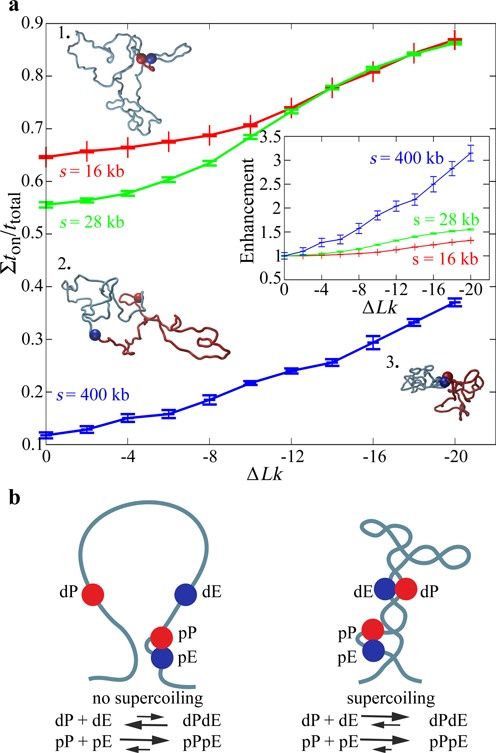Figure 5.

Supercoiling hardly affects intra-domain interactions between closely spaced enhancers and promoters. (a) Decreasing the genomic distance between enhancers and promoters located in the same topological domain increases their interaction time but diminishes the influence of supercoiling on enhancer–promoter stability (here shown for ε = 8 kBT). The inset shows the fold change of ton/ttotal with respect to ΔLk = 0 for the three tested genomic distances. For large genomic separation (s = 200 kb) supercoiling increases >3-fold the enhancer–promoter interaction time, whereas this enhancement index is only of ∼1.2 for small genomic separations (s = 16 kb). The snapshots illustrate that for small genomic separation supercoiling is not needed to stabilize enhancer–promoter interaction (1.) whereas this is not the case of large genomic separations (2., 3.). The locations of modelled enhancers and promoters are indicated with red beads. Two arcs separating modelled enhancer and promoters are indicated with different colours. (b) Ideogram conveying the message that the interaction between distally located enhancers and promoters (dP and dE, respectively) is strongly augmented and thus can be regulated by supercoiling. However, proximally located enhancers and promoters (pE and pP, respectively) are only marginally affected by supercoiling as they do not need supercoiling to reach relatively high ton/ttotal values.
